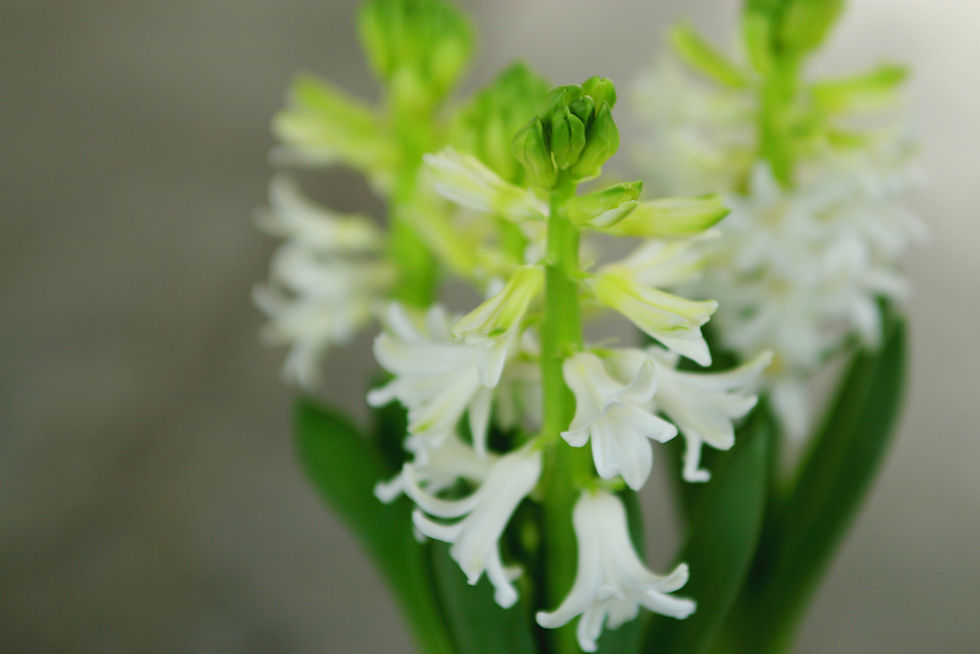
Learn all about the enchanting beauty and numerous benefits of the Hyacinth. Discover tips for growing, caring and using the Hyacinth in your home and garden.
Introduction
Hyacinth is a popular bulbous plant known for its vibrant, fragrant flowers and versatility. This plant can be grown indoors, outdoors, or in containers, making it a popular choice for gardeners, florists and home decorators. In this comprehensive guide, we will dive into the history, cultural significance, and the various benefits of Hyacinth.
The History and Cultural Significance of Hyacinth
Hyacinth is a species of flowering plant that is native to the eastern Mediterranean region. The plant's name is derived from Greek mythology, where it is said to have been created from the blood of a young man named Hyakinthos. Over time, the Hyacinth has become a symbol of rebirth, renewal and hope, making it a popular choice for springtime gardens and indoor decorations.
Varieties of Hyacinth: Which One is Right for You?
There are several types of Hyacinth available, each with its own unique set of characteristics and attributes. Some popular varieties include:
Dutch Hyacinth: This type of Hyacinth is known for its long, sturdy stems and large, fragrant blooms. It is a popular choice for indoor arrangements and outdoor gardens.
Wood Hyacinth: This species of Hyacinth is native to Europe and is known for its delicate, nodding blooms and delicate fragrance. It is often used in naturalistic garden settings and woodland gardens.
Grape Hyacinth: This type of Hyacinth is a compact, mat-forming plant that is covered in spikes of small, fragrant blooms. It is often used as a groundcover or in rock gardens.
How to Grow and Care for Your Hyacinth
Growing Hyacinth is easy and can be done by planting the bulbs in the fall, either in the ground or in containers. Once planted, Hyacinth requires minimal care, but there are a few tips and tricks to keep in mind to ensure that your plants thrive:
Soil: Hyacinth prefers well-drained soil that is rich in organic matter.
Watering: Hyacinth should be kept evenly moist, but not waterlogged.
Fertilizing: Hyacinth benefits from a balanced fertilizer applied once a month during the growing season.
Pruning: After the blooms have faded, cut the foliage back to the ground, but leave the bulb in the ground to recharge for the next growing season.
The Benefits of Hyacinth: More Than Just a Pretty Face
Hyacinth is not only aesthetically pleasing, but it also has numerous benefits, including:
Fragrance: Hyacinth is known for its intense, sweet fragrance, which is not only pleasant to the nose, but it can also have a calming effect on the mind and body.
Air Purification: Hyacinth has been shown to remove toxins and purify the air, making it a great choice for indoor gardens and homes.
Cut Flowers: Hyacinth makes beautiful cut flowers, which can be used to add a touch of color and fragrance to indoor arrangements.
Best USDA Hardiness Zones for Growing Hyacinth
Hyacinths are hardy plants that can thrive in a variety of climates, but they grow best in USDA hardiness zones 4 to 9. In these zones, Hyacinths can be planted in the ground and will return year after year, providing an abundance of fragrant blooms.
Available Colors for Hyacinth
Hyacinths are available in a range of colors, including pink, purple, blue, white, yellow, and red. Each color is unique and provides a striking contrast to the surrounding plants in your garden. When choosing the color of Hyacinths to plant, consider the color scheme of your garden and the look you're trying to achieve.
Tips for Indoor Growing
Hyacinths can also be grown indoors, and they make a great addition to your home décor. To grow Hyacinths indoors, you'll need to provide bright, indirect light and keep the temperature between 60 and 65°F. Additionally, it's important to keep the soil moist but not waterlogged.
Potential Challenges of Growing Hyacinth
Like any plant, Hyacinths are susceptible to pests and diseases. Some of the common challenges you may face when growing Hyacinths include bulb rot, powdery mildew, and spider mites. To prevent these issues, it's important to plant your bulbs in well-draining soil, keep the plants well-watered, and avoid overcrowding.
Visual Aids for Better Understanding the Different Varieties of Hyacinth and Their Growing Habits
To better understand the different varieties of Hyacinth and their growing habits, it's helpful to have visual aids such as images or illustrations. These aids can help you identify the specific type of Hyacinth you're looking for, and understand how it grows and what it needs to thrive.

FAQs
Q: What is the best time to plant Hyacinth?
A: The best time to plant Hyacinth is in the fall, several weeks before the ground freezes.
Q: How long does it take for Hyacinth to bloom?
A: Hyacinth typically takes around 12-16 weeks to bloom after planting, making it a popular choice for early spring gardens.
Q: Can Hyacinth be grown indoors?
A: Yes, Hyacinth can be grown indoors in pots or containers, making it a great choice for those who want to bring a touch of spring inside their home.
Conclusion:
In conclusion, Hyacinth is a versatile and beautiful plant that has been loved and valued for centuries. Whether you are growing it in your garden, in pots, or using it as cut flowers, Hyacinth is sure to bring a touch of beauty, fragrance, and benefits to your life. With proper care and attention, Hyacinth can be a stunning addition to your home and garden for many seasons to come.
コメント